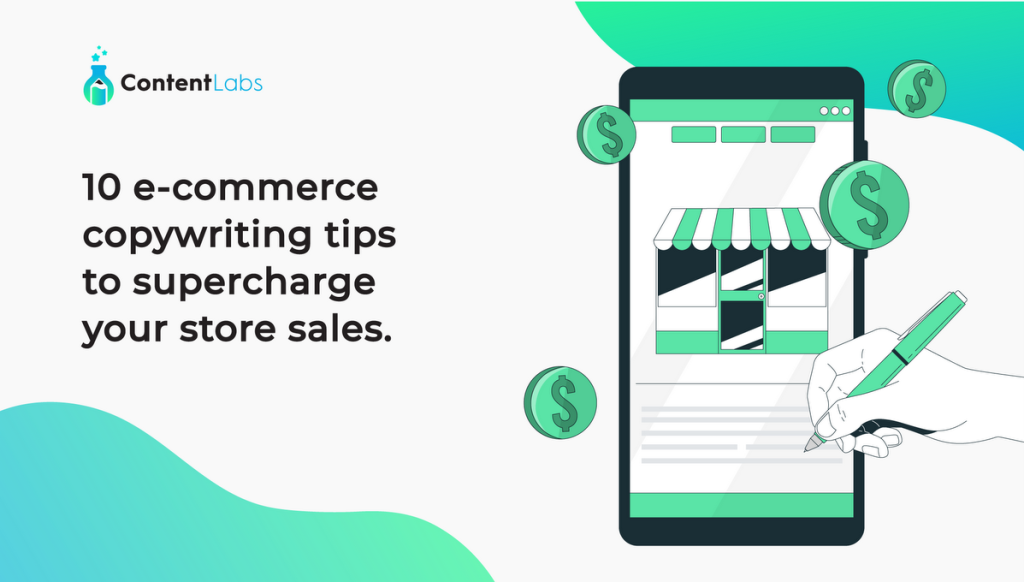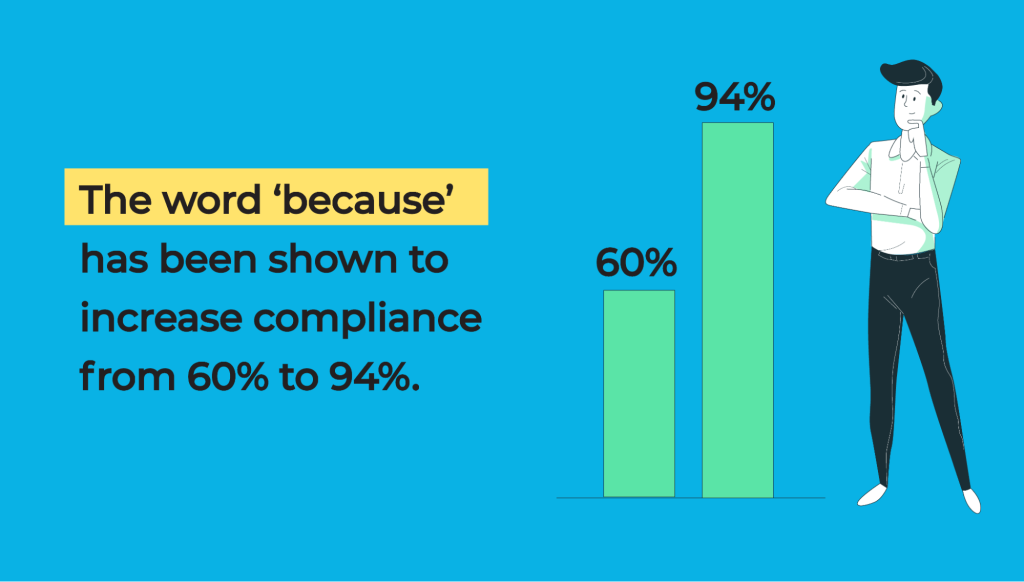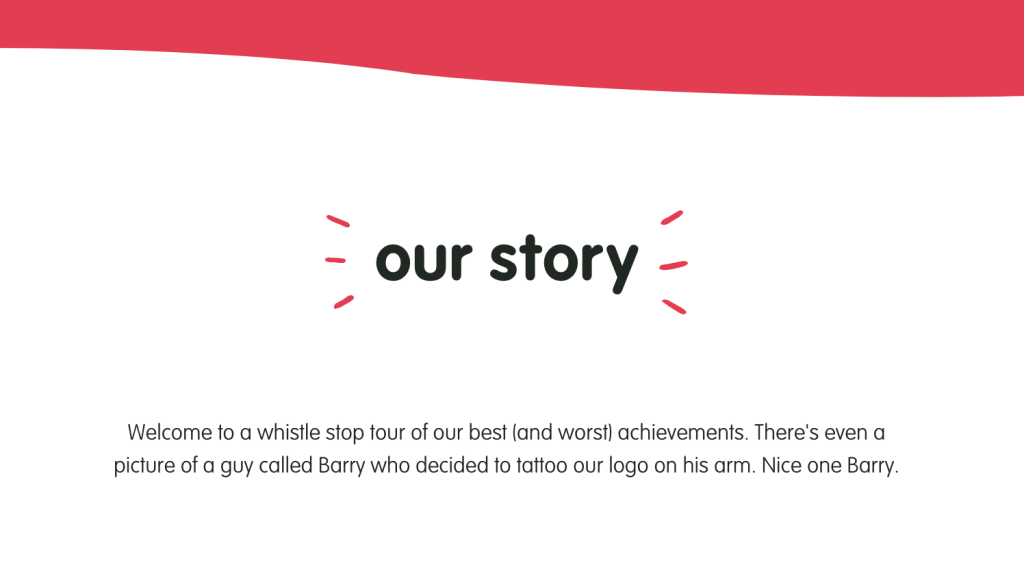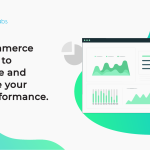You (should) already know that good copy is crucial to the success of your online store.
Well done ecommerce copywriting boosts your ranking in search engines, cements your brand identity, and guides users through your site.
And most importantly, engaging copy converts into more sales for your site. Something that, as an ecommerce professional, I’m guessing you might quite like.
But what exactly does copy refer to? And how do you write copy that grabs your target audience and converts them into paying customers?
Let’s dive into our ecommerce copywriting secrets and find out.

Ecommerce copywriting: what exactly is it?
Ecommerce copywriting refers to any written content you create for your online store. This typically includes landing pages, product pages, product descriptions, category pages, and headlines.
The purpose of ecommerce copywriting is three-fold; to attract visitors to your ecommerce site, persuade them to purchase something once they get there, and persuade them to return – all through the power of words.
To craft persuasive copy, you need to understand the psychology of your customers and what problem they’re trying to solve with your product or service.
Once you understand what makes your customers tick, produce some killer copy to match your strategy. We’ll show you how.
Writing sales copy for your online store: 10 expert tips to boost online sales
1. Understand your target audience
Why?
That’s the question any consumer asks before making a purchase on an ecommerce website – even if the reason is simply because they want to.
We like to know why we’re parting with our hard-earned cash and what value our purchase can bring to our lives.
Simply using the word ‘because’ has been shown to increase compliance from 60% to 94%. If you needed any further proof of the power of words – that’s it.

Essentially, your sales copy needs to explain why customers should buy your products and why they should choose you over other online retailers.
To effectively make this case, you need to understand your customer’s pain points.
If your online business is a clothing store, your customer’s number one pain point is that they need clothes for warmth and privacy. That’s a given.
But they may have some needs beyond the basic requirement for clothing, and you can use these needs to set your ecommerce business apart from the rest.
For example, consumers may struggle to look for clothes that are both sustainable and affordable. What does this mean for you? It means you should use your copy to emphasise your environmental credentials and the excellent value for money that your items offer.
Figuring out your customers’ problems and how your product or service solves them is the starting point for all great copy. Do customer research or host a focus group to get to know your target audience.
It can be helpful to create client avatars; profiles of your target audience that detail their lifestyles and pain points. The needs of your customers can then inform your site’s ecommerce copywriting strategy.
2. Make it readable
Many of us were taught at school that slotting as many fancy words into your text as possible will make you a great writer.
Writing for the web is different.
When you’re writing copy for the web, you’re writing for an international audience. You’re writing for readers who are time-poor and information-rich. You’re even writing for Google’s algorithm.
All that to say, keep your writing concise. Avoid overly long sentences or words that could turn off otherwise engaged readers.
When people read online content, they skim the page looking for key information. In fact, only 16% of web users actually read word by word.
Make sure your pages are skim-reading friendly, with headings, subheadings and short paragraphs. If you’ve got a chunky block of text, break it up with bullet points.
Now, let’s talk visuals.
Bear in mind that in some cases, showing can be more effective than telling.
If, for example, you sell food on your e-commerce site, remember that people eat with their eyes. Entice your audience with mouth-watering pictures of your best dishes. A picture can be worth 100 words of copy.
If you’re hitting your reader with a barrage of statistics, they may be better presented in an eye-catching infographic. Nobody wants to read a ten-sentence long paragraph crammed with percentages. And on that note, on to the next subheading…
3. Write for search engines
Having an ecommerce site with a killer landing page is useless if nobody sees it. While you can attract organic traffic through social media and word of mouth, one of the easiest ways for online readers to find you is through search engines.
With this in mind, let’s look at how you can optimise your writing for SEO. That’s search engine optimisation, for newbies.
There’s a myth going around (if you find out who started it – let us know) that Google only likes copy that’s seriously lacking in personality. That’s simply not true.
Search engines boost content that actually adds value to the reader, so top-notch writing skills are a must. To write in a way that helps your online store rank better, use the following tips.
Use keywords
Start by researching the highest-ranking keywords for online stores like yours, then use them in your text. Avoid keyword stuffing, which is when you cram keywords into a sentence and ruin the flow of the copy.
Instead, insert keywords organically into your copy so they make sense as part of the sentence.
Write for humans
While you should bear SEO in mind when you write, remember the end reader is a human being, not Google. Make sure the copy is engaging, easy to read, and actually answers the reader’s question.
Use headlines
Structure your content in a way that’s SEO-friendly. Search engines like content that’s formatted with H1s, H2s, H3s etc.
If your site uses blog posts to generate traffic, optimise the headlines for common search queries. Most users search for terms such as ‘how to do X’, ‘tips for X’ or the best X’, so use your titles to address these queries.
4. Use your powers of persuasion
When crafting a product description, it can be tempting to simply list all the product’s wonderful features and hope consumers are convinced to buy it.
This is a mistake.
Your customers don’t just want to know the what, they want to know the why. The best ecommerce copywriting focuses not just on the features of a given product, but what that given product can do for you.
This is where direct and indirect benefits come in.
Direct benefits are the obvious, tangible benefits that a product brings to your life. Let’s take hair dye as an example. The direct benefits are:
- You can dye your hair a brand new colour
- You can save money on going to the salon
But what are the indirect benefits of that?
- You try something new
- You tick something off your bucket list
- You finally bag a date with your crush because your new hair colour makes you more confident
- You buy a new laptop with all the money you save from dyeing your hair at home
Product benefits matter more than product features when it comes to wooing your target audience.
Tap into these indirect benefits when you craft your product descriptions to take your ecommerce copywriting skills to the next level.
5. Include social proof
If your customers want to know how good your product or service really is, they won’t just take your word for it.
Consumers read an average of 10 reviews of a product before buying it, so they actually need about ten people’s word for it.
The explosion of influencer culture has ramped up this need for social proof, with more consumers than ever before wanting their peers’ seal of approval on a product before they’ll buy it.
Consumers know that you want to sell your product, so it makes your copy a little less trustworthy. Their fellow consumers, on the other hand, have no reason to lie. If they say your store’s soap made them happier than their own wedding day, they mean it.
With this in mind, including social proof in your online copy is crucial. Social proof can come in various formats, but the most common types are customer testimonials, reviews, or ratings.
User-generated content is one of the fastest-growing and most effective forms of social proof, the best example being social media posts.
Include social media posts containing pictures of your product on your online store’s product pages, and let your customers speak for themselves.
6. Tell a story
We humans are suckers for a good narrative. Every TV talent contest knows that a good backstory sells, and the same sentiment applies to your online store.
Story-driven ads tug on our emotions and can make us more likely to trust the brand in question. Including your brand’s story as a page on your site reminds your customers that you’re a real person, not just a soulless brand with a product to sell.
Take a look at this example from ethical clothing retailer, Lucy & Yak:

Lucy & Yak’s target audience is ethically-minded shoppers who want to buy from an independent brand with strong moral credentials.
The ‘about us’ page leans into this by telling the reader about the founders’ humble roots sewing pouches on the beach.
This storytelling lets potential customers know that Lucy & Yak is a small company, and the owners have worked hard to achieve its success.
The mention of hand-sewn pouches makes us think of handmade, quality clothes, rather than mass-produced products.
Storytelling doesn’t get much more compelling than this.
Think about what you want your brand’s narrative to be, and craft some engaging copy that brings the reader along on your journey.
7. Use PASO
PASO is a formula used in copywriting which involves identifying your prospect’s pain points and rubbing some salt in the wound.
Standing for Problem, Agitate, Solution, Outcome, PASO leans on pain points to encourage your customers to take action – AKA buy your products.
This method might sound a little cruel, but identifying your customer’s struggles and leveraging them to benefit your business is copywriting 101. The PASO formula offers a handy way to structure your copy for maximum success.
Problem
Identify the issues causing your target audience pain and identify with the emotions this throws up.
For example, if your site sells an online accounting system, you might point out that small business owners often lack the time to do their own tax returns.
Agitate
This is where you really drive home the effects of their pain point and what might happen if they don’t solve it.
To continue with the accounting services example, here’s where you point out that if small businesses are wasting time figuring out accounts, they’ll have no time to scale their business. And they’ll be faced with a serious amount of admin if they make any errors.
Two things that no business wants!
Solution
We’ve used the stick. Now it’s time for the carrot. Here’s where you save the day (not all heroes wear capes). Explain how your product or service will solve their issue and make all those nasty pain points disappear.
For example, you introduce your accounting services and how they free up the time of business owners and ensure error-free invoicing.
Outcome
The final step is to encourage the reader to imagine a life where they buy your product or service, and all their problems disappear.
In our accounting metaphor, your target business owner increases their profit margins and scales their business with their newfound free time.
8. Be unique
If you’re selling a product or service online, you’ll likely be competing against many other businesses with a similar offering.
You need to differentiate yourself from the competition with copy that stands out. You can do this by cultivating a unique tone of voice.
When it comes to brand personality, your brand’s tone of voice can be the number one indicator of the type of company you are.
Take the brand innocent.
innocent is famed for having a quirky, conversational tone of voice, as seen on their about us section here:

This informal, playful copy lets us know that innocent is a quirky brand, and the conversational style makes the reader feel that they’re real people rather than a faceless corporation.
Look at the type of copy your competitors are writing and consider how you can make yours stand out. If other online stores are dull and stuffy, opt for a conversational tone to market yourself as a friendly and authentic brand.
The correct tone of voice for your brand also depends on the type of product or service you offer. If you’re in the financial services sector, you might want to steer away from copy that’s too informal.
Instead, you want to market yourself as the adult in the room by cultivating a brand persona that’s strong, knowledgeable, and competent.
Speaking of competence, make sure your spelling and grammar are impeccable. No company wants to look untrustworthy or illegitimate because of an ecommerce landing page riddled with grammatical errors.
9. Overcome objections
Any consumer about to buy a product will have some concerns. Is the product too expensive? Is it as effective as it says? Is the brand ethical? Is the company legitimate?
If you’re selling services, a potential customer might wonder if they could carry out the task themselves for free with the help of a YouTube video.
To minimise these potential objections, you need to make your product or service seem as risk-free as possible.
You can do this with the following tools:
- Strong FAQs section, covering all questions a potential customer would have
- Social proof
- Secure payment badge
- Include a TrustPilot (or similar) rating
- Offer a free trial or money-back guarantee
The landing page of Simba, a mattress company, is a perfect example:

Mattress buyers are worried about spending a lot on an uncomfortable mattress, so Simba offers a 200-night free trial to put consumers’ minds at rest.
Simba further boosts its credentials by leaning on its customer reviews, British heritage, and scientific data to create legitimacy. The company has overcome most of its customers’ potential objections in one fell swoop.
10. Include a clear call to action
Swanky product descriptions, landing pages, and a spot at the top of the google search results pages are all well and good, but your copy needs to lead the site visitor to an endpoint.
The final piece of the copywriting puzzle is a call to action that converts your site visitor to a paying customer.
If the action you want is a customer purchase, ‘Buy It Now’ might not always be the best call to action. It can come across as pushy, and nobody likes being told what to do.
Instead, try something softer sounding and risk-free. Examples include:
- ‘Yes, I want to save 45%’
- ‘Sign up for free today’
- ‘Chat to our friendly team today’
- ‘Get the look’
- ‘Treat yourself’
Make your call to action sound like it’s a benefit for the person clicking it rather than for your business.
The bottom line
The impact of copy on your ecommerce site’s sales can’t be overstated. Copy can make or break your site’s success, with good copy pushing you to the top of Google and increasing sales and bad copy turning potential customers away.
Start by getting to know your audience and creating a strong content marketing strategy before crafting engaging copy for every page of your site.
If you’ve simply not got the time to write copy for your site, get in touch with a professional ecommerce copywriter for a guaranteed return on investment. Happy copywriting!

